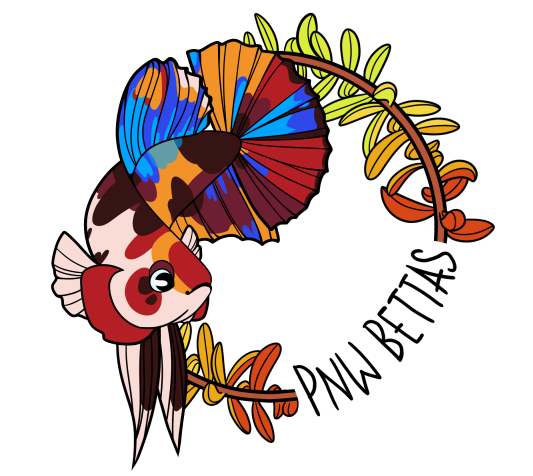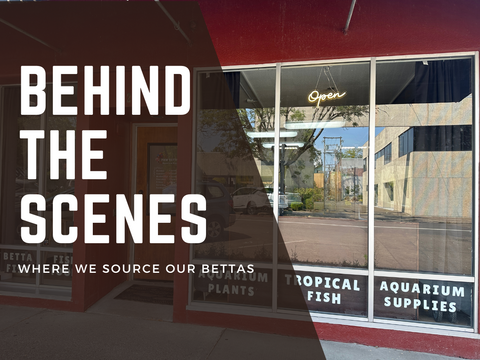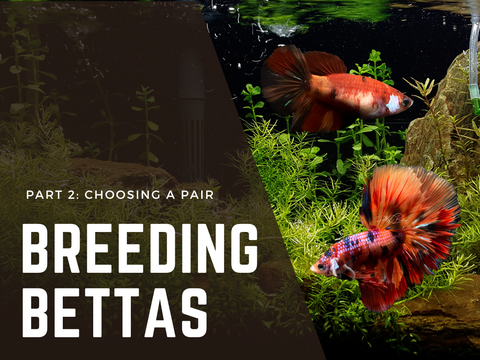I have always felt that being as transparent as possible for our practices keeping and importing fish is super important. I have no idea how many of our customers actually will want to have all of this information in depth, but for those who do, this article is for you! We are going to walk through where our fish come from, how they are imported, and how they are kept and quarantined before being sold.
Where do the fish come from?
Most of the fish we sell are imported from Thailand. While I have done breeding projects and sold US bred bettas in the past, PNW Bettas has grown exponentially since then, and it is now both a retail fish store and an online fish store. Breeding bettas is very time consuming, and much more expensive to do in the US compared to SE Asia. For that reason I only do it as a hobby now, and not to supply our shop. We just are not set up to be a large scale farm, and choose to work with family owned farms in Thailand instead. The lower cost of living in Thailand, as well as the USD to THB exchange rate allows the breeders to be paid well for their labor and stunning high quality fish, while also allowing us to keep our retail rates as low as possible.
When it comes to choosing breeders we wholesale from, the health of our fish is out top priority. We have spent a lot of time finding the best breeders out there, rather then just the cheapest. We source from family owned and run farms, who genuinely care about their fish, and the quality of what they are producing. By having a few different farms in rotation, we are also able to stock a wide variety of bettas, even in our small shop.
How do the fish get to the US from Thailand?
In order to get these fish from Thailand, they have to be imported. This is the first step in the journey from the farms to your tanks.
The fish are first packed up by the breeder. This is done all by hand, the fish are never machine packed at these smaller farms. Each fish goes into their own bag, and are double or even triple bagged to prevent leakage during transit. The smallest size bag we are ever sent are heat sealed triangle bags for large orders of females. Females ship very well, and our breeder use the largest size triangle bags I have seen in the industry. Most fish are shipped in 4" (or 5" for giants) hand tied bags. We consistently have very low DOA rates with these methods. They are then organized into large styrofoam boxes for export, often times with cold packs to prevent them from overheating (Thailand is quite warm).
The breeder then takes these boxes to the exporter. This is the individual with the license to send fish overseas. They will take all of these boxes from different breeders and send them to the United States. These boxes are sent on flights from one country to another, so its a relatively quick process. The person who receives these boxes also has a license for import/export and handles the paperwork, import fees, and getting the boxes to their final destination.
We currently use a transhipper who processed our boxes into the US, and then sends them via air cargo to our closest airport. The transhipper doesn’t unbox any of the fish or re-bag them, they are kept packaged and just sent on another flight. They will open the boxes and add heat packs during the colder months, to ensure that they don't get too cold once in the US. We drive to the closest cargo center/airport to pick up the box/boxes. This makes the transit very quick, as little as 6hr in transit after import.
Once they arrive at the airport, we pick them up and drive them back to our fish room. This is where our work really begins.
Unboxing at the Shop
Once we receive the fish we go through the process of unbagging. After removed from their bags, the fish go into individual containers (besides female groups). For the first few days we run the fish though some preventative medications. We deworm all the fish coming in, and monitor them closely for any other signs of poor health. Luckily this is very rare, and when it does happen, isolated to one individual fish. We don't tend to use antibiotics on all fish preventatively, as this causes huge issues with antibacterial resistance in the hobby. But our team has lots of experience treating fish illness, so if an infection does happen we can easily identify it and treat accordingly.
The containers we use to hold fish are quite small, but this size does not impact the health of the fish in any way because of how they are maintained. They are kept in a few types of jars, including 1 gallon food grade plastic jars and acrylic "beanie boxes".
Maintenance
To ensure the fish stay healthy, they always have clean water, proper temperatures and a premium diet. To obtain the proper temperature we use under tank heating such as reptile heat cable or heat mats. By doing so the containers stay at 78-82 degrees (jars on the bottom shelf are closer to 78, and the top shelf is closer to 82). To ensure clean water, the jars are water changed 3 times per week. Water changing includes pouring out all of the water in the jar, and adding new clean dechlorinated water.
We limit cross contamination as much as possible, which is why we would never consider doing a sump system on our imports. This prevents disease spread if one fish does become ill, and keeps illnesses isolated. We use a variety of sanitization method on the tanks between fish, and on equipment between tanks.



Comments (0)
There are no comments for this article. Be the first one to leave a message!